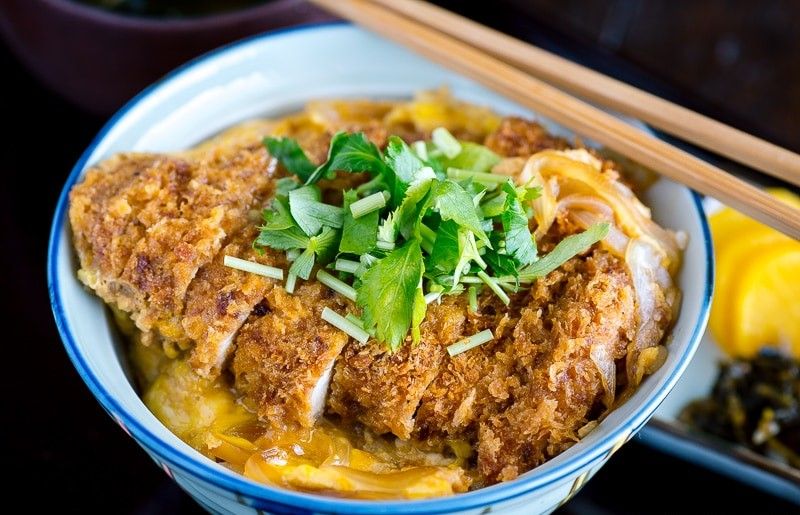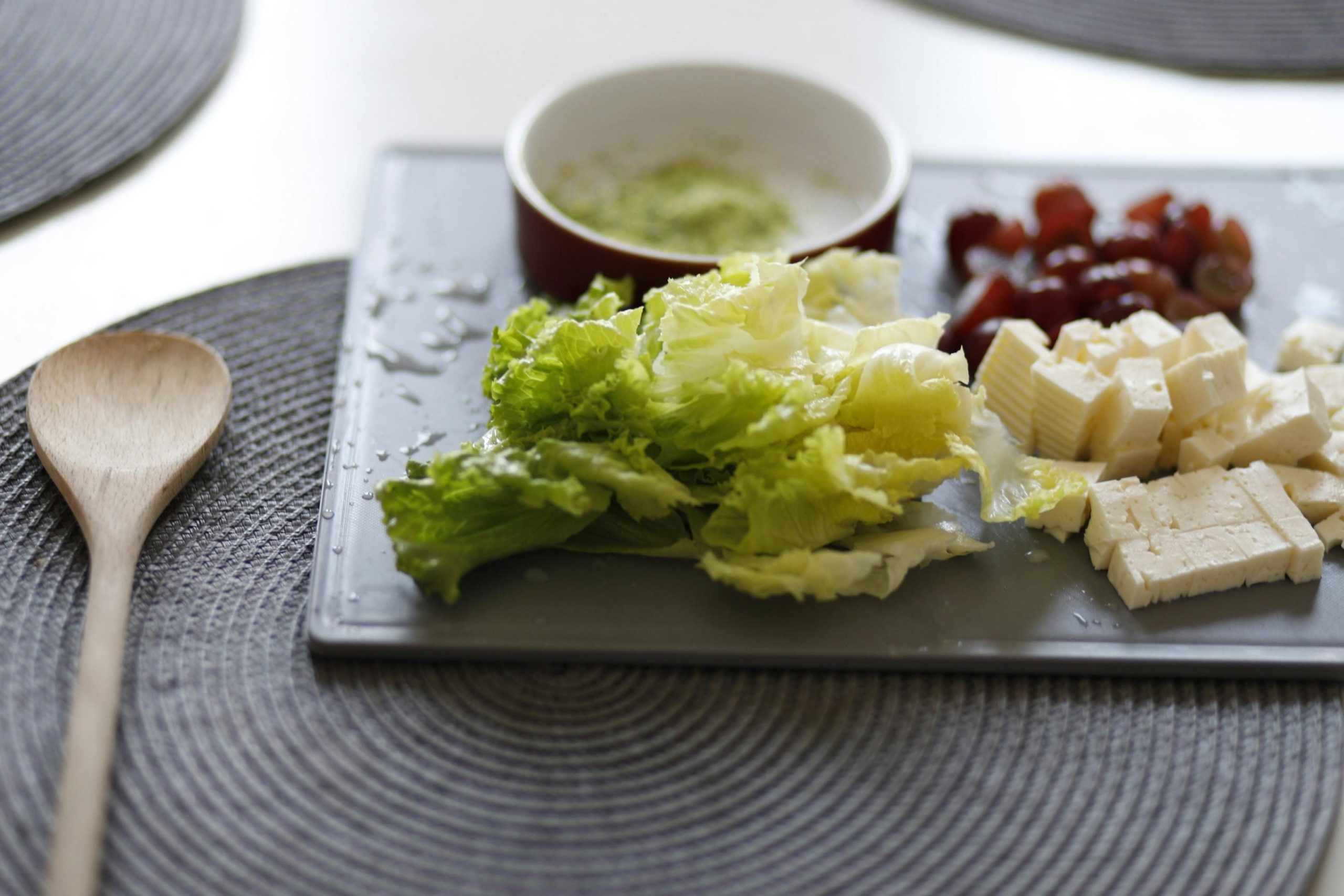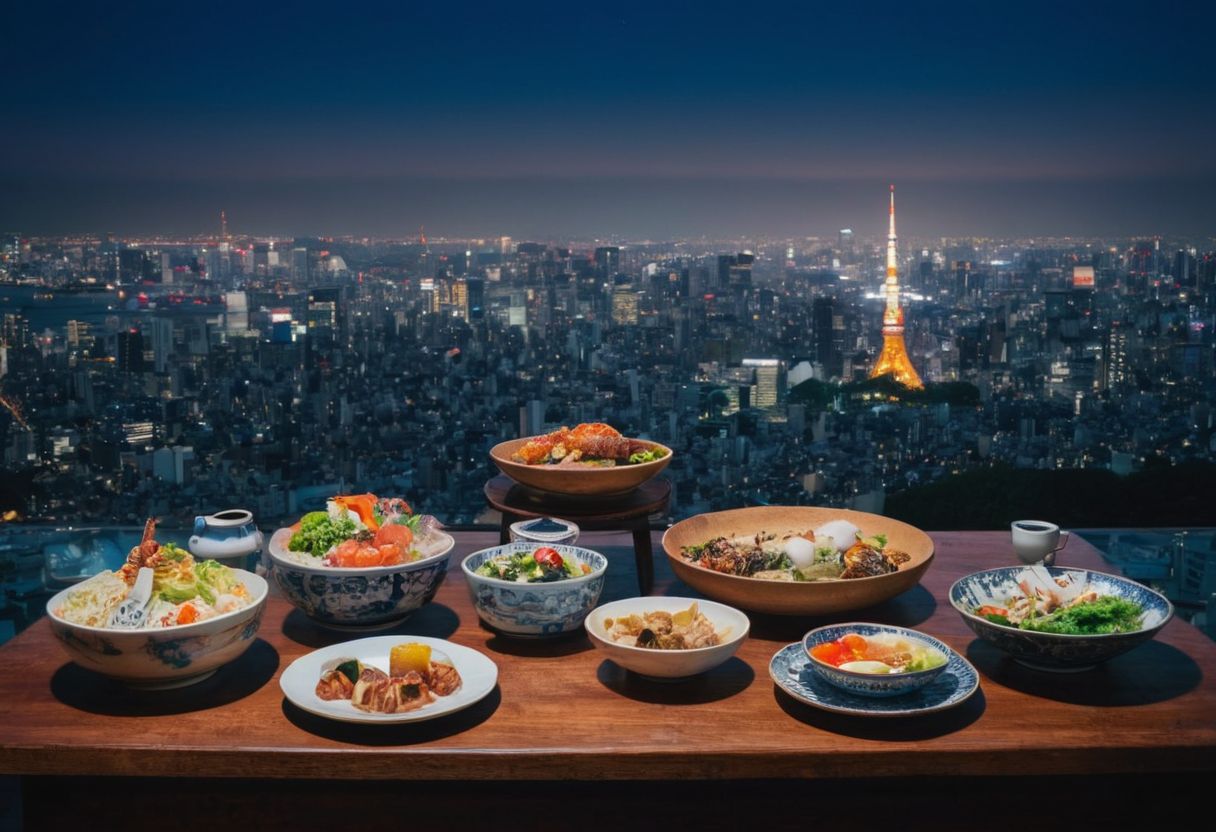Imagine a world where every bite offers a symphony of flavors, textures, and aromas.
Choosing what to eat can often feel overwhelming, especially when craving something both comforting and exciting.
Donburi, a versatile Japanese rice bowl dish, serves as a perfect solution, offering a variety of options from savory beef to crispy tempura, all served over fluffy rice.
In this article, we’ll dive into the delightful world of donburi, exploring its essential ingredients, popular varieties like gyudon, oyakodon, and unadon, and how these dishes create a comforting yet exciting culinary experience.
The Essential Ingredients of Donburi: Building the Perfect Bowl

At the heart of any donburi dish is the rice, often referred to as the soul of the meal. Short-grain rice is preferred for its ability to become sticky when cooked, making it perfect for holding together the various toppings that are piled on top. This type of rice, sometimes specifically labeled as sushi rice or Japanese rice, is essential for achieving the authentic texture and flavor profile of donburi. The process of washing and steaming rice is crucial, as it impacts the final dish’s quality by removing excess starch and ensuring the rice is perfectly fluffy.
Beyond the rice, the variety of toppings defines the diversity of donburi. Common ingredients include:
- Thinly sliced beef or chicken for dishes like gyudon or oyakodon
- Seafood such as eel in unadon or assorted seafood in kaisendon
- Vegetables and egg, which add color, texture, and nutritional value
The choice of topping is complemented by a soy-based sauce, often enhanced with mirin and dashi for depth of flavor. Garnishes like sesame seeds, pickled ginger, and green onions not only add bursts of flavor but also make each donburi bowl visually appealing. This combination of high-quality rice, carefully selected toppings, and flavorful sauces and garnishes is what builds the perfect donburi bowl, offering a comforting and satisfying meal.
Gyudon: Savoring the Richness of Beef Donburi

Gyudon, a beloved beef donburi, stands out for its simplicity and depth of flavor. The dish begins with the essential base of fluffy, short-grain rice, topped with thin slices of beef and onions, simmered in a sweet and savory sauce. The sauce, a crucial component, typically combines soy sauce, mirin, and dashi, creating a rich, umami-packed coating for the beef and onions. This combination of ingredients not only offers a satisfying meal but also showcases the harmony between the rice and its toppings.
Preparing gyudon at home is straightforward, making it a popular choice for a quick yet delicious meal. The key lies in slicing the beef into thin slices for quick cooking and allowing the onions to soften and absorb the flavors of the sauce. Variations of the dish might include the addition of vegetables like green onions or shiitake mushrooms, and some recipes suggest finishing the bowl with a raw or lightly poached egg. Regardless of the variation, gyudon remains a comforting, savory option in the world of donburi, celebrated for its rich flavors and simple preparation.
Oyakodon: The Harmony of Chicken and Egg in Donburi

Oyakodon, a heartwarming dish that brings together chicken and egg in a delightful harmony, is a testament to the simplicity and depth of Japanese cuisine. Originating from a clever use of leftovers by a customer at a chicken restaurant during the Meiji Era, this dish has evolved into a beloved comfort food nationwide. It’s the tender, half-cooked egg and well-seasoned chicken over warm, fluffy rice that makes oyakodon stand out. The dish’s name itself, translating to “parent-and-child bowl,” beautifully symbolizes the main ingredients – chicken and egg, making it not just a meal but a story on a plate.
Preparing oyakodon at home is surprisingly simple and requires just a few key ingredients: chicken, eggs, onions, and a flavorful sauce made with dashi broth and soy sauce. The cooking process involves:
- Simmering thinly sliced chicken in a mixture of dashi, soy sauce (about 1 tbsp), and mirin until tender
- Adding onions and allowing them to soften
- Gently pouring beaten eggs over the chicken and onions, then letting the mixture simmer until the egg is just set, creating a creamy texture that’s hard to resist. Oyakodon’s appeal lies not only in its comforting taste but also in its ability to be a quick, nutritious meal that satisfies the soul, making it a staple in Japanese households and beyond.
Katsudon: A Crispy Pork Cutlet Donburi Experience

Katsudon stands out in the donburi family for its unique combination of textures and flavors, centered around a breaded pork cutlet. Unlike the more straightforward preparations of dishes like gyudon or oyakodon, katsudon involves an additional step of deep-frying the pork cutlet to achieve its signature crispy exterior. This deep-fried pork cutlet, or tonkatsu, is then simmered briefly in a mixture of dashi, soy sauce, and mirin, along with onions and egg, marrying the crispy texture with a savory, slightly sweet sauce. The key to perfect katsudon is in preserving the cutlet’s crispiness while ensuring it’s fully coated with the flavorful sauce.
The process of creating katsudon might seem intricate, but it’s this attention to detail that elevates the dish above other donburi varieties. Here are a few steps critical to its preparation:
- Tenderizing the pork cutlet to ensure even cooking
- Coating the cutlet in panko breadcrumbs for that essential crunch
- Deep-frying at the right temperature to achieve a golden exterior without overcooking the meat
Once assembled over a bowl of steamed rice, the dish strikes a perfect balance between the juicy, savory pork and the crispiness of the fried coating, making katsudon a comforting yet exciting meal choice.
Butadon: The Unassuming Delight of Pork Donburi

Butadon, a pork donburi that might seem unassuming at first glance, is a dish that packs a flavorful punch with its simple ingredients. Centered around pork that’s thinly sliced and marinated in a savory sauce, this dish is a testament to the power of simplicity in Japanese cuisine. The sauce, typically a mixture of soy sauce, sugar, and sometimes mirin, coats the pork slices, which are then laid over a bed of fluffy, steamed rice. The combination of the tender pork with the subtly sweet and savory sauce creates a comforting meal that’s both satisfying and straightforward to prepare.
While Butadon is enjoyed across Japan, it has regional variations that highlight local flavors and ingredients. For example, in its birthplace in the Tokachi region, the dish is known for featuring locally farmed pork, which is believed to add a unique depth to the flavor. Despite these regional differences, the essence of Butadon remains the same: a focus on high-quality ingredients prepared with care. This makes Butadon a must-try for anyone looking to explore donburi recipes beyond the more commonly known types like gyudon or katsudon. Its simplicity, combined with the rich flavors, showcases the versatility and charm of donburi dishes.
Tendon: Crispy Tempura Meets Savory Donburi

Tendon, a delightful fusion of crispy tempura and savory donburi, stands out for its unique texture and flavor. The key to an exceptional tendon lies in choosing the best tempura types. Ideal options include shrimp, sweet potato, and green beans, each offering a different crunch and taste. These tempura pieces are then laid atop a bed of steaming rice, creating a contrast between the crisp tempura and the soft, fluffy rice. This combination not only pleases the palate but also adds a satisfying variety of textures to the dish.
Keeping the tempura crisp in a tendon bowl can be challenging, but a few tips can help maintain that desirable crunch. Firstly, the tempura should be fried at the correct temperature to ensure it’s crispy on the outside and tender on the inside. Secondly, placing the tempura on the rice just before serving minimizes sogginess. Lastly, applying the sauce sparingly or serving it on the side allows diners to control the amount they use, preserving the tempura’s crispness. These simple steps can elevate a tempura donburi from good to great, making every bite a crispy delight.
Unadon: Indulging in the Elegance of Eel Donburi

Unadon, or eel rice bowl, stands as a luxurious emblem within the diverse world of donburi, offering a unique culinary experience. The preparation of this dish is meticulous, involving freshwater eel that is filleted, skewered, and grilled over charcoal to achieve a perfect balance of crispy on the outside and tender on the inside. This method not only enhances the eel’s natural flavors but also imbues it with a subtle smokiness that is characteristic of traditional Unadon recipes.
The allure of Unadon is further elevated by its sauce variations, which are integral to the dish’s comforting and rich taste. The eel is basted with a kabayaki sauce, a concoction of soy sauce, mirin, sugar, and sake, lending it a sweet and savory glaze that perfectly complements the eel’s delicate texture. Unadon’s status as a comfort food in Japan is attributed to this harmonious blend of flavors and textures, making it a must-try for anyone exploring donburi recipes.
Kaisendon: A Seafood Celebration in Donburi Form

Kaisendon is a vibrant showcase of the ocean’s bounty, served atop a bed of sushi rice. This seafood celebration includes a variety of fresh catches such as salmon sashimi, sea urchin, and salmon roe. Each ingredient is carefully selected to offer a burst of flavor, making every bite a delightful experience. The freshness of the seafood is paramount, ensuring that the natural tastes and textures shine through in this exquisite dish.
To elevate the Kaisendon experience, pairing suggestions include:
- Furikake for an added crunch and flavor boost
- Soy sauce and wasabi on the side for dipping
These accompaniments complement the delicate flavors of the seafood without overpowering them. Whether you’re a seafood aficionado or new to seafood donburi, Kaisendon offers a unique and satisfying culinary journey, inviting you to explore the depths of the ocean’s flavors in one harmonious bowl.
Chukadon: Exploring the Chinese Influence on Donburi

Chukadon introduces a fascinating Chinese twist to the traditional Japanese donburi, blending the best of both culinary worlds. At its core, Chukadon is a rice bowl adorned with a hearty mix of stir-fried vegetables, seafood, and meat, all simmered in a sauce rich with soy and sake. This sauce, distinct for its thick, gravy-like consistency, brings a savory, umami, and nutty flavor that sets Chukadon apart from other donburi varieties. Its unique ingredients and flavor profile showcase the seamless integration of Chinese cooking techniques into Japanese cuisine, creating a dish that is both comforting and exotic.
As a member of the donburi family, Chukadon stands out for its rich and complex flavors. The dish’s main components include:
- Stir-fried vegetables such as onions and carrots
- Seafood and meat, often shrimp or chicken
- A savory sauce made from soy sauce, sake, and cornstarch for thickening
These elements combine to create a meal that is not only deeply satisfying but also highlights the influence of Chinese cuisine on Japanese food culture. Chukadon offers a unique dining experience, inviting diners to explore the rich culinary heritage that spans across borders, making it a must-try for aficionados of both Japanese and Chinese cuisines.
Discover Donburi on Your Next Culinary Adventure with INDULGE
Discovering the rich and diverse world of donburi isn’t just about tasting various Japanese dishes; it’s an adventure that can deepen your appreciation for Japanese cuisine. INDULGE offers curated culinary tours that take you on a journey through Zurich’s international food scene, including the exploration of Japanese delights like donburi. Whether you’re a seasoned foodie or a curious tourist, these tours are designed to offer an immersive experience into the culinary traditions that have shaped donburi, from the Edo period to modern fast-food interpretations.
By joining an INDULGE tour, you’re not just eating; you’re learning about the history, ingredients, and cultural significance of each dish. Highlights of the tour could include:
- Sampling various types of donburi and understanding their origins
- Learning about the essential ingredients that make up the perfect bowl
- Discovering the influence of the Edo period on Japanese cuisine
This hands-on approach ensures that every participant leaves with not only a satisfied palate but also a deeper understanding of Japanese culinary arts. Ready to embark on this flavorful journey? Visit INDULGE to book your next culinary adventure and explore the world of donburi like never before.
Frequently Asked Questions
What is in a donburi?
A donburi is a Japanese rice bowl dish that features a variety of toppings over fluffy, short-grain rice. The essential ingredient is the rice, often referred to as sushi rice or Japanese rice, which becomes sticky when cooked. Toppings can include thinly sliced beef or chicken, seafood like eel or assorted seafood, and vegetables and egg, all complemented by a soy-based sauce often enhanced with mirin and dashi. Garnishes such as sesame seeds, pickled ginger, and green onions add additional bursts of flavor and visual appeal.








